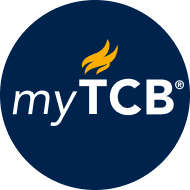
Understanding the existing program: The current EB-5 visa program has helped fund huge real estate projects, including New York’s Hudson Yards and The Wharf in Washington, DC, through foreign investment. EB-5 visa holders invest roughly $1 million into job-creating projects as part of their paths to green cards. The existing program raised more than $2 billion in each of the last two years, with the majority of it directed to commercial real estate projects, including office, industrial, and multi-family residential properties. This has been particularly useful during a time of high interest rates and constrained lending. Foreign investors using the EB-5 program are seeking citizenship, not specific returns on investment, which has given latitude to commercial real estate developers. The developer of a 19-story residential tower described how financing through traditional capital markets could come with 10-12% interest rates, compared to only 5-7% with EB-5 investors, cutting the cost of capital significantly. The TCB take: The Administration should make sure replacing the EB-5 program with the “gold card” does not reduce the foreign investment market for real estate financing and that terms are clear. The proposed “gold card” references $5 million being paid as a fee or donation, not as an investment, which would be paid back (as it is with the EB-5 program). Understanding who would receive this fee, and how it would be invested in the US economy has not been detailed. This creates uncertainty for real estate developers seeking foreign investment. As currently described, the “gold card” program could shrink the pool of investors, due to bringing up the cost-of-entry to $5 million from about $1 million with the EB-5 program.Replacing EB-5 Visas with “Gold Cards” Could Leave Hole in Commercial Real Estate Market
The President recently announced a plan for a “gold card” visa program to provide permanent residency and a “path to citizenship” that would cost $5 million and replace the EB-5 program. Although the Administration doesn’t have that authority without authorization from Congress, the potential elimination of the EB-5 program has many in commercial real estate concerned.

myTCB® Members get exclusive access to webcasts, publications, data and analysis, plus discounts to events.
Fed December Decision: Not So Clear Cut
December 09, 2025
September Inflation Pause Bodes Well for Fed Cut
December 05, 2025
September Retail Sales Show Consumers Taking a Breather
November 25, 2025
New Truce Offers Stability after US–China Trade Plummeted in 2025
November 05, 2025
Fed Signals It May Need to Pause
October 29, 2025
Fed Cut Amid Data Fog: What You Need to Know
October 28, 2025
Charts
The proliferation of easy-to-use generative AI requires that policymakers and business leaders each play an important role.
LEARN MORECharts
A hyperpolarized environment, diminished trust in our nation’s leaders.
LEARN MOREIN THE NEWS
Denise Dahlhoff on How CEOs Are Talking About Tariffs—without Saying “Tarif…
May 21, 2025
IN THE NEWS
Erin McLaughlin on Tariff Policy
April 07, 2025
IN THE NEWS
Erin McLaughlin on Reshoring Factors
April 05, 2025
IN THE NEWS
Erin McLaughlin on US Reshoring
April 02, 2025
IN THE NEWS
Erin McLaughlin: How policy uncertainty may exacerbate infrastructure chall…
March 19, 2025
IN THE NEWS
Erin McLaughlin discusses the latest on tariff policy
March 14, 2025
